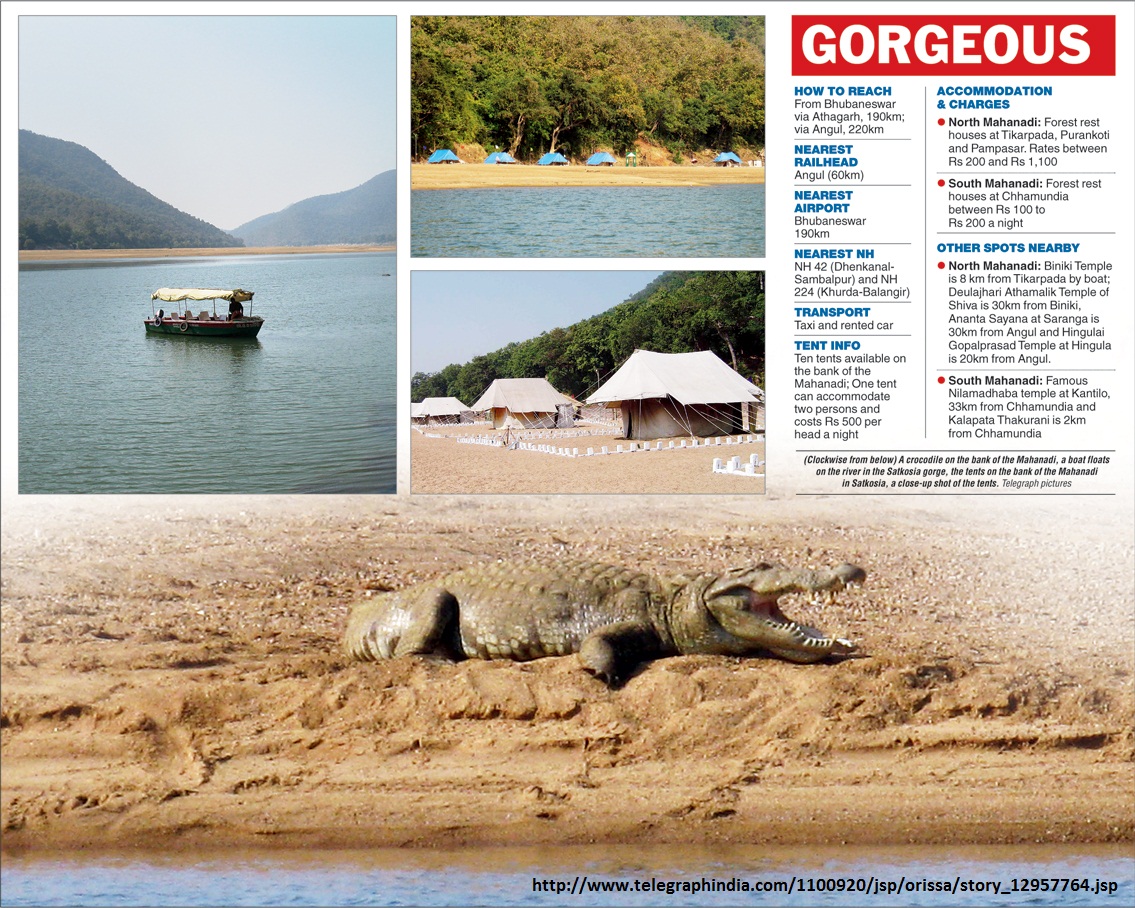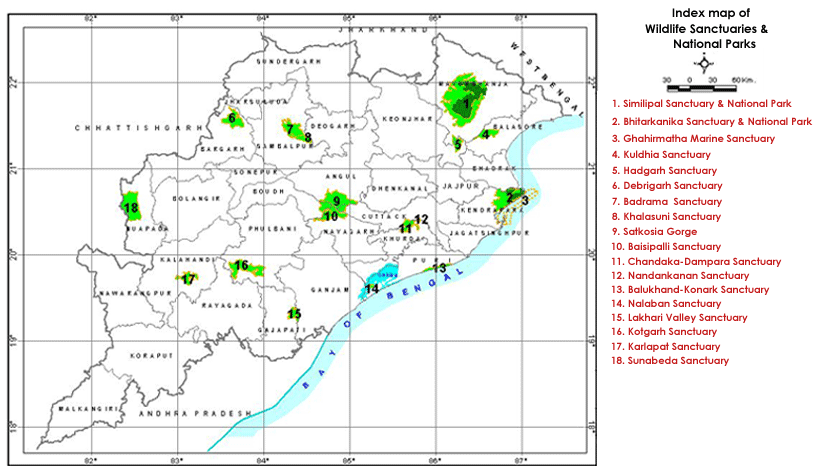Satkosia gorge sanctuary located in the heart of the State is unique in more than one way. River Mahanadi has cut right across the Eastern ghats endowing the gorge with all its beauty.
The 22 km long gorge divides the area into two distinct parts accessible from Angul and Nayagarh or Boudh. It covers four districts of Angul, Cuttack, Nayagarh and Boudh and is the second largest sanctuary of Orissa.
The areas support moist deciduous forest, dry deciduous forests and moist peninsular sal forests and a largely bamboo species.
Wild animals like the Royal Bengal Tiger, Leopard, elephant, four horned antelope, giant squirrel, wild dogs, nilgai, sloth bear, mouse deer, spotted deer etc are the pride of the sanctury.
A huge variety of resident and migratory birds and reptile species (gharial, mugger, crocodile, fresh water turtle, poisonous and non poisonous snakes etc) are also a part of the sanctuary.
The sanctuary is home to 400 plant species, 38 mammals, 31 reptiles in the sanctuary. Satkosia gorge was declared a sanctuary in 1976 AD by the State Government under Section 18 of Wildlife (protection) Act 1972. Its area is 795.52 sq km.
The sanctuary is managed by two wildlife divisions, south part by Mahanadi Wildlife Division at Nayagarh and north by Satkosia Wildlife Division at Angul. Both Satkosia Gorge and Baisipalli sanctuary area of 1038 sq.km were declared elephant reserves in 2002 by the State Government. Satkosia also enjoys the status of a Tiger Reserve after being the title in December 2007 after an approval of the Central Tiger Conservation Authority as per Wildlife Protection Act (amendment 2006).
Now, request would also be put forth to declare it a bio-sphere reserve for its biodiversity and abundant natural resources. Former Central Environment amd Forest Minister Kamalnath initiated to declare as Bio-sphere reserve.
About 133 villages in the sanctuary, including three forest villages and 10 hamlets. In The buffer zone as many as 128 villages are located.
The village people mostly depended on forest for their livelihood but the ban enforced by the Government on forest work and collection of NTFP and forest produces as per direction of Supreme Court and Wildlife Protection Act.
No developmental work is being done inside the sanctuary for a long time. The recent declaration of Satkosia as the second tiger reserve was long over due. It would not only go a long way in protecting the tiger population but also take care of other rare animals on the verge of extinction.
State government should spare no time in implementation of the reserve process by making an action plan and constituting an authority as required. Now in the Tiger Reserve 18 Royal Bengal Tiger, 34 Leopard and 194 elephants.


